Capsules vs. tablets - Whats the difference?

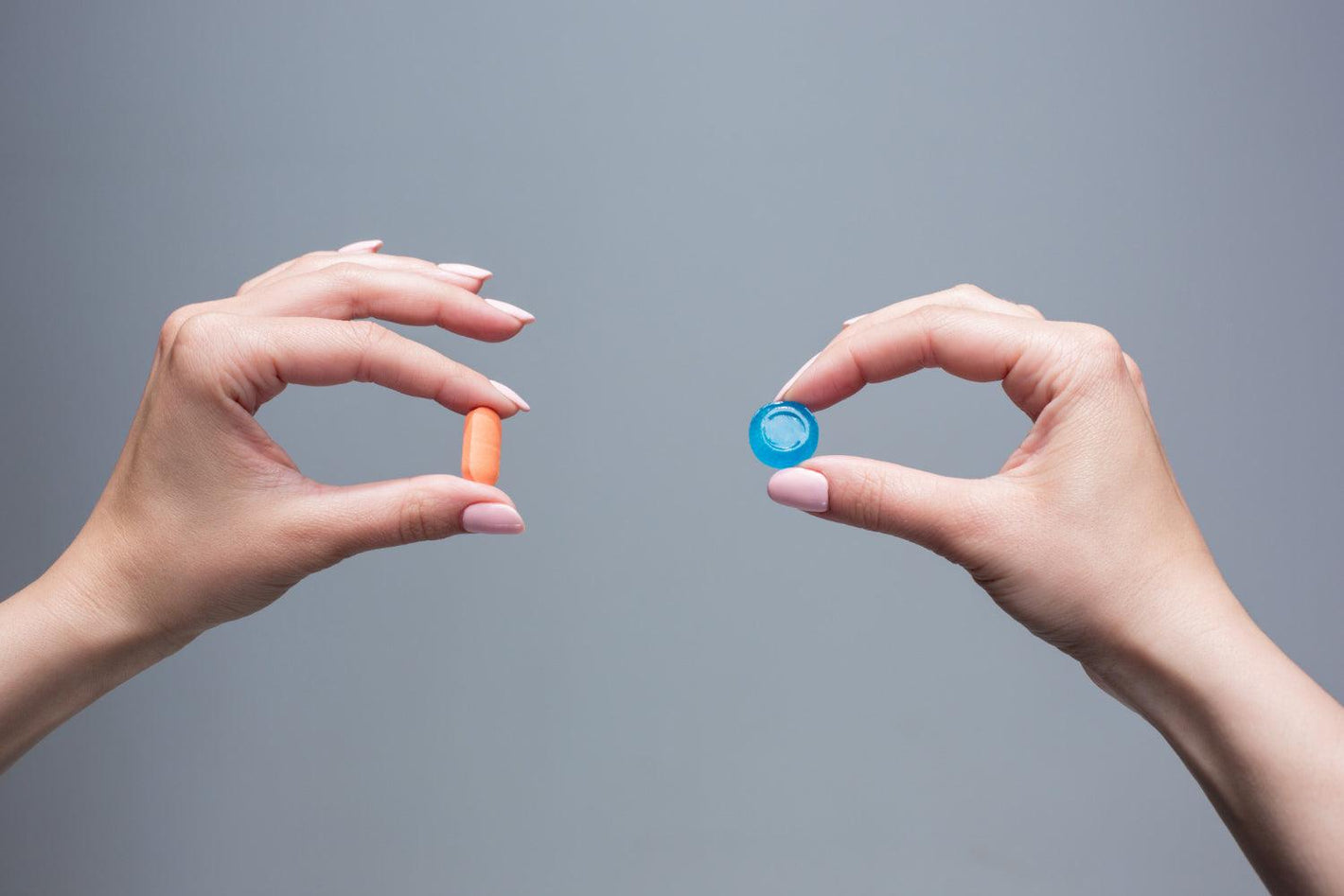
Related products
Introduction
When it comes to medication, understanding the difference between capsules and tablets is crucial. This distinction is not just a matter of form but also involves variations in pharmacokinetics, patient compliance, and therapeutic efficacy. Both capsules and tablets are popular dosage forms, each with unique characteristics and advantages. A comprehensive grasp of these differences is essential for healthcare professionals, patients, and caregivers alike, ensuring optimal medication choice and management.
Capsules: An Overview
Capsules are a type of medication delivery system that encases the drug in a gelatinous outer shell. This shell dissolves in the stomach, releasing the active ingredient. Capsules are known for their ease of swallowing and their ability to mask unpleasant tastes and odours of the medication. Dr. Jane Smith, a leading pharmacologist, states, "Capsules offer a patient-friendly option, especially for those who find swallowing tablets challenging." This form is often preferred for medications that are irritant to the stomach lining, as the encapsulation can help reduce gastrointestinal discomfort.
Statistics show that capsules are highly favoured among patients with dysphagia (difficulty swallowing). According to a 2022 study, approximately 60% of such patients reported a preference for capsules over tablets. Capsules also allow for the incorporation of liquid and powder medications, offering versatility in drug formulation.
Tablets: An Overview
Tablets, on the other hand, are solid dosage forms containing medicinal substances compressed into a small, round, or oval shape. They are the most common form of medication delivery, largely due to their cost-effectiveness and ease of mass production. Tablets can be scored, allowing them to be easily split and dosed accurately. Dr. Michael Brown, a renowned clinical pharmacist, notes, "Tablets offer a reliable and precise dosage form, which is essential for treating chronic conditions where dose accuracy is paramount."
Tablets can be coated to enhance their taste, improve swallowability, and protect the active ingredient from the acidic environment of the stomach. The British National Formulary (BNF) highlights that approximately 70% of oral medications prescribed in the UK are in tablet form, underlining their popularity and widespread use.
Comparative Analysis
The choice between capsules and tablets isn't merely about physical form; it's intricately linked to the medication's absorption and effectiveness. Capsules tend to dissolve more rapidly in the stomach, leading to quicker absorption of the medication. This feature is particularly beneficial for drugs that require rapid onset of action. However, some drugs formulated in capsules can have a delayed-release mechanism, releasing the active ingredient at a specific site in the gastrointestinal tract or at a controlled rate over time.
Tablets, conversely, may have a slower dissolution rate, but this can be advantageous for medications requiring sustained release. As Dr. Smith explains, "Controlled-release tablets are designed to maintain steady medication levels in the bloodstream, which is crucial for chronic conditions like hypertension or diabetes."
Patient Compliance and Preference
Patient compliance, a critical factor in effective healthcare, is significantly influenced by the dosage form. Capsules are often preferred for their ease of swallowing and lack of a bitter taste. However, tablets offer the advantage of dose divisibility, which is essential when adjusting dosages. As per a survey conducted in the UK, 40% of patients reported a preference for tablets, citing ease of handling and storage.
Both capsules and tablets have distinct advantages and limitations. Healthcare professionals must consider factors like drug properties, patient preferences, and specific medical conditions when deciding between these two forms. Each paragraph of this article ties back to the key theme: understanding the critical differences between capsules and tablets is vital for effective medication management, directly impacting patient health outcomes and overall healthcare efficacy.
Understanding the basic differences between capsules and tablets is critical in the field of medicine. This knowledge assists in the correct dispensation and administration of medications and impacts the overall treatment experience and efficacy.
Capsule
A capsule is a type of medication encased in a small, usually cylindrical container made from a gelatinous substance. The primary purpose of the capsule is to protect the active ingredient from any external factors that might degrade it and to mask any unpleasant taste or odour of the medication. Inside, capsules can contain medication in powder or liquid form. When the capsule reaches the stomach, the gelatin shell dissolves, releasing the medication for absorption.
Tablet
A tablet, in contrast, is a solid dosage form of medication, typically round or oval in shape. Tablets are made by compressing the active ingredient, along with binders and fillers, into a dense mass. This form is highly versatile and can be manufactured to have various properties, like delayed or controlled release. Tablets may also be coated with substances to improve their taste or to protect the active ingredient as it passes through the stomach.
Key Differences
The physical differences between capsules and tablets are significant and influence their use in medical treatment.
- Shape and Material: Capsules are cylindrical and made from a soft, gelatinous material, while tablets are typically hard and compressed into round or oval shapes.
- Contents: Capsules often contain medication in powder or liquid form, whereas tablets are a compressed mix of the active ingredient and other substances.
- Dissolution: Capsules dissolve quickly in the stomach, releasing their contents rapidly. Tablets, depending on their design, can dissolve at varying rates and may be formulated to release medication over an extended period.
- Taste Masking: Capsules are better at masking unpleasant tastes and odours, as the medication is enclosed within a tasteless gelatin shell. Tablets, unless coated, may have an unpleasant taste.
- Modification of Dose: Tablets can often be split to adjust doses, a feature not possible with capsules.
These differences are not just about physical appearance but also relate to how the medication is released and absorbed in the body, impacting its effectiveness and suitability for different medical conditions and patient preferences.
Composition and Manufacturing
The manufacturing processes of capsules and tablets are distinct, involving different materials, techniques, and complexities. Understanding these processes is crucial for professionals in the pharmaceutical industry and can also provide valuable insights for healthcare providers and patients.
How Capsules are Made: Materials and Process
Capsules are primarily made using gelatin, derived from animal collagen, although vegetarian options, such as hydroxypropyl methylcellulose (HPMC), are increasingly common. The process of making capsules involves the following steps:
- Preparation of Gelatin Shell: Gelatin is mixed with water and other additives to form a gel. This gel is then moulded into the desired capsule shape.
- Filling: The gelatin shells are filled with the active pharmaceutical ingredient (API) and any excipients. This filling can be in the form of powders, liquids, or granules.
- Sealing: The two halves of the capsule (body and cap) are sealed together to enclose the medication.
- Quality Control: Capsules undergo stringent quality control measures, including checks for weight variation, disintegration time, and the integrity of the seal.
The process requires precision to ensure uniform dosage and proper sealing of the capsules.
How Tablets are Made: Materials and Process
Tablets are made using a mixture of the active drug and excipients like binders, fillers, disintegrants, and sometimes flavouring agents. The tablet manufacturing process generally includes:
- Granulation: The active ingredient and excipients are mixed and granulated to ensure uniformity.
- Compression: The granulated mixture is compressed into tablets using a tablet press, which applies high pressure to form the tablets into specific shapes and sizes.
- Coating: Some tablets are coated with substances to protect the active ingredients from stomach acids, improve taste, or control the release of the drug.
- Quality Assurance: Tablets are tested for hardness, dissolution, friability, and uniformity of dosage.
Tablet manufacturing is a highly controlled process, ensuring each tablet contains the precise dose of medication.
Comparative Analysis of Manufacturing Complexities
The manufacturing processes for capsules and tablets both require a high degree of precision and quality control but differ in complexity:
-
Capsules: The production of capsules is less complex mechanically but requires careful handling to prevent damage to the delicate gelatin shells. The filling process must ensure that each capsule contains an exact dose of the medication.
-
Technical Challenges: Moisture control is critical in capsule manufacturing, as excessive moisture can cause the gelatin to become too soft, and insufficient moisture can make it brittle.
-
Tablets: The process of making tablets is more mechanically complex. The granulation and compression stages require precise control to ensure uniformity in size, weight, and drug content.
-
Flexibility in Formulation: Tablets offer more flexibility in terms of formulation – they can be designed to release the drug slowly over time or to disintegrate quickly in the stomach.
While both processes demand strict quality control and precision, tablet manufacturing can be more complex due to the mechanical processes involved and the flexibility required in formulating different types of tablets. Capsule manufacturing, though seemingly simpler, requires meticulous handling and environmental control.
Drug Release Mechanisms
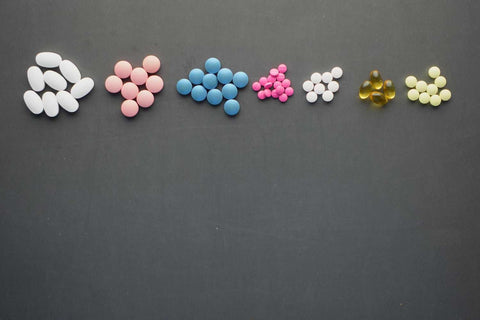
The mechanisms through which capsules and tablets release medication in the body are pivotal in determining their effectiveness in treatment. These mechanisms influence the onset, duration, and intensity of the drug's action.
How Capsules Release Medication in the Body
Capsules release medication through a relatively straightforward process:
- Dissolution of the Shell: Once ingested, the gelatin shell of the capsule dissolves in the stomach's acidic environment.
- Release of Contents: After the shell dissolves, the encapsulated medication (in powder, liquid, or granular form) is released.
- Absorption: The medication is then absorbed into the bloodstream from the stomach or intestine, depending on its formulation.
Certain capsules are designed for delayed or extended release. These may have special coatings or be composed of materials that dissolve at different rates, releasing the active ingredient at a specific site in the gastrointestinal tract or over an extended period.
How Tablets Release Medication in the Body
The release of medication from tablets is more variable and can be designed for specific pharmacokinetic profiles:
- Disintegration: Tablets first disintegrate into smaller particles in the digestive system.
- Dissolution: The active drug, now in smaller particles, dissolves in the bodily fluids.
- Absorption: The dissolved drug is then absorbed into the bloodstream.
Tablets can be formulated in several ways to modify drug release:
- Immediate-Release Tablets: These are designed to disintegrate and release the drug rapidly after ingestion.
- Extended-Release Tablets: They have coatings or are made from materials that dissolve slowly, providing a sustained release of medication.
- Enteric-Coated Tablets: These are designed to pass through the stomach intact and dissolve in the intestines, protecting the drug from stomach acids and preventing gastric irritation.
Comparison of the Effectiveness of Drug Release
Comparing the effectiveness of drug release between capsules and tablets depends largely on the specific medication and the desired therapeutic outcome:
- Rapid Onset of Action: Capsules are often preferred when a rapid onset of action is desired, as they generally dissolve and release their contents quickly.
- Controlled Release: For maintaining steady drug levels in the body over time, extended-release tablets are more effective. They are particularly beneficial for chronic conditions requiring consistent medication levels.
- Targeted Delivery: Enteric-coated tablets offer an advantage in delivering medication to the intestines, avoiding the acidic environment of the stomach. This is especially useful for drugs that are unstable in or irritating to the stomach.
Both capsules and tablets offer unique mechanisms for drug release, each suited to different therapeutic needs. The choice between them should be based on the specific drug's properties, the desired speed and duration of action, and the target site of absorption.
Advantages and Disadvantages
When considering the use of capsules and tablets for medication delivery, it's important to weigh their respective advantages and disadvantages. This evaluation helps in determining the most suitable form for different types of medication.
Advantages
Capsules offer several benefits:
- Ease of Swallowing: The smooth, gelatinous surface of capsules makes them easier to swallow compared to tablets.
- Taste Masking: Capsules effectively mask the taste and odour of the medication, which is beneficial for drugs with an unpleasant taste.
- Rapid Drug Release: They typically dissolve quickly, allowing for faster release and absorption of the medication, which can be crucial for pain relief or other conditions requiring rapid onset.
- Versatile Formulation: Capsules can hold medication in various forms – powder, liquid, or gel – offering flexibility in formulation.
- Aesthetic Appeal: Capsules often have a more appealing appearance, which can improve patient compliance, especially in paediatric or geriatric populations.
Disadvantages
Despite their advantages, capsules also have some limitations:
- Cost: Generally, capsules are more expensive to manufacture than tablets.
- Size Limitations: Capsules are limited in size, which may restrict the amount of drug they can contain. This can be a disadvantage for medications requiring large doses.
- Moisture Sensitivity: Capsules can be sensitive to moisture and temperature, requiring careful storage conditions.
- Inability to Split: Unlike tablets, capsules cannot be split, which limits dosage flexibility.
- Potential Allergenic Components: Some capsules are made from animal-derived gelatin, which might not be suitable for vegetarians or individuals with specific allergies.
Suitability
The suitability of capsules and tablets for different types of medication depends on various factors:
- Rapid Absorption Required: For drugs that need to be absorbed quickly, capsules are often preferred.
- Taste Sensitivity: Medications with an unpleasant taste are better suited in capsule form to mask the taste.
- Extended Release Needed: For sustained drug release, specially formulated tablets are more suitable.
- Large Doses: Tablets can accommodate larger doses of medication compared to capsules.
- Specific Targeting within the Digestive System: Enteric-coated tablets are ideal for drugs that need to be absorbed in the intestines rather than the stomach.
- Patient Preferences: Patient aversion to swallowing large tablets or sensitivity to taste can make capsules a more suitable option.
While capsules offer advantages in terms of ease of use and patient compliance, tablets provide benefits in terms of cost, dose flexibility, and extended-release formulations. The choice between the two should be guided by the specific requirements of the medication, the therapeutic goals, and patient preferences.
Patient Considerations
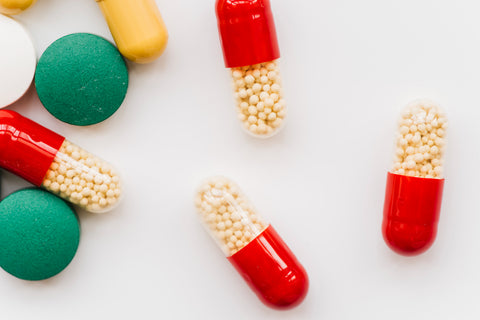
In the context of patient care, the choice between capsules and tablets is influenced by several factors. These include ease of swallowing, taste and smell, and specific needs of different populations like children and the elderly.
Ease of Swallowing: Capsules vs. Tablets
- Capsules: Often preferred for their ease of swallowing, capsules have a smooth, gelatinous exterior that slides down the throat more easily. This feature is particularly beneficial for patients with dysphagia (difficulty in swallowing) or those who are averse to swallowing solid forms of medication.
- Tablets: They can sometimes be more challenging to swallow due to their harder, more rigid structure. However, certain tablets are scored, allowing them to be broken into smaller, more manageable pieces, which can facilitate easier swallowing for some patients.
The Role of Taste and Smell in Patient Preference
- Capsules: They excel in masking the taste and smell of medication, as the active ingredients are enclosed within the shell. This makes capsules a preferred choice for medications with an unpleasant taste or odour.
- Tablets: Unless they are coated or specially formulated, tablets may have an inherent taste or smell that can be off-putting to some patients. This can affect compliance, especially in individuals who are sensitive to taste and smell.
Considerations for Special Populations
-
Children: Medication administration in children requires careful consideration. Children may find capsules easier to swallow than tablets, but the size of the capsule can be a limiting factor. Additionally, the inability to split or crush capsules can pose dosage challenges. Chewable or dissolvable tablets are often formulated with flavors to make them more appealing to children.
-
Elderly: For the elderly, particularly those with swallowing difficulties or reduced manual dexterity, capsules may be preferable. However, the elderly often require medication adjustments, which is more easily achieved with tablets that can be split or crushed. It's also important to consider any cognitive impairments that might affect a patient's ability to understand and follow medication instructions.
-
Patients with Allergies or Dietary Restrictions: Capsules, especially those made from animal-derived gelatin, may not be suitable for vegetarians or individuals with specific allergies. In such cases, tablets or vegetable-based capsules might be more appropriate.
-
Patients with Chronic Conditions: For those requiring long-term medication, such as patients with chronic diseases, the choice between capsules and tablets may hinge on factors like cost, ease of use, and the need for sustained-release formulations.
Patient-specific factors such as age, physical abilities, taste sensitivity, and individual health needs play a crucial role in determining whether capsules or tablets are more suitable. Healthcare providers should consider these aspects when prescribing medication to ensure optimal compliance and effectiveness of the treatment.
Customization and Dosage Control
The customization of medication is a critical aspect of pharmaceutical formulation, directly impacting dosage precision and patient compliance. Both capsules and tablets offer various customization options, each with its unique advantages and challenges.
Customization Options for Capsules
Capsules allow for several customization possibilities:
- Delayed Release: Some capsules are designed to delay the release of the medication until they reach a specific part of the gastrointestinal tract. This is achieved through special coatings or by using materials in the capsule shell that dissolve at different pH levels.
- Enteric Coating: Similar to delayed-release capsules, enteric-coated capsules are designed to withstand the acidic environment of the stomach. The coating dissolves in the more alkaline environment of the intestines, releasing the medication there to avoid stomach irritation or to target intestinal absorption.
- Combination Therapies: Capsules can hold different types of medication within the same shell, allowing for combination therapies. This can include multiple drugs or the same drug in different release forms (immediate and delayed-release).
Customization Options for Tablets
Tablets offer their own set of customization features:
- Scored Tablets: Many tablets are scored, allowing them to be easily split into halves or quarters. This facilitates adjustable dosing, enabling patients to take a precise amount of medication as prescribed.
- Layered Tablets: Some tablets are formulated in layers, each containing different medications or different release formulations of the same medication, allowing for sequential drug release.
- Coating Variations: Tablets can be coated for various purposes, such as to mask taste, protect the drug from stomach acids (enteric coating), or control the release of the drug (extended-release coatings).
Impact on Dosage
The customization of capsules and tablets has a significant impact on dosage precision and patient compliance:
- Dosage Precision: Customized drug formulations, such as scored tablets or capsules with specific release characteristics, allow for more precise dosing. This is particularly important for medications where dose accuracy is critical to therapeutic effectiveness and safety.
- Patient Compliance: Customizations that improve the ease of use, such as easier swallowing or taste masking, can significantly enhance patient compliance. For example, patients are more likely to adhere to a medication regimen if they can take a medication without experiencing unpleasant tastes or if they can swallow their medication easily.
- Targeted Drug Delivery: Customizations like enteric coating or delayed-release formulations improve the efficacy of drugs by ensuring that they are released at the specific site of absorption, reducing side effects and enhancing therapeutic outcomes.
The ability to customize capsules and tablets for specific release patterns, dosing requirements, and patient preferences plays a crucial role in optimizing drug therapy. These customizations not only enhance patient compliance and convenience but also ensure that medications are delivered in the most effective and safe manner.
Storage and Stability

The storage and stability of pharmaceuticals are crucial for maintaining their efficacy and safety. Both capsules and tablets have specific requirements for shelf life and storage conditions, and they are differently affected by environmental factors.
Shelf Life and Storage Conditions for Capsules
Capsules, particularly those made of gelatin, are sensitive to environmental conditions:
- Shelf Life: The shelf life of capsules can vary depending on the ingredients and the manufacturing process. Generally, they have a shelf life of 1 to 2 years.
- Storage Conditions: Capsules should be stored in a cool, dry place. Humidity and high temperatures can cause the gelatin shell to become brittle or sticky, compromising the integrity of the capsule.
- Light Sensitivity: Some capsules may be sensitive to light, necessitating storage in opaque or dark containers to prevent degradation of the contents.
Shelf Life and Storage Conditions for Tablets
Tablets tend to be more stable and less sensitive to environmental conditions:
- Shelf Life: Tablets typically have a longer shelf life compared to capsules, often ranging from 2 to 5 years.
- Storage Conditions: Like capsules, tablets should be stored in a cool, dry place. However, they are generally more resistant to temperature variations and humidity.
- Physical Durability: Tablets are less likely to be damaged by physical factors like pressure or minor impacts, making them more robust during handling and transport.
Impact of Environmental Factors on Each Form
Environmental factors can significantly affect the stability and efficacy of both capsules and tablets:
- Humidity and Moisture: Capsules are particularly sensitive to moisture, which can cause them to dissolve, become sticky, or lose their shape. Tablets, while more resistant, can still suffer from issues like swelling or disintegration in high humidity.
- Temperature: Extreme temperatures can affect both forms. High temperatures may soften or melt the gelatin in capsules, while very low temperatures can make them brittle. Tablets may also become more brittle in cold conditions or soften in heat, particularly if they have a coating.
- Light: Exposure to light can degrade certain medications. This is more of a concern for capsules with translucent shells, as they offer less protection from light compared to the typically opaque tablets.
- Air Exposure: Exposure to air (specifically oxygen) can lead to the oxidation of some ingredients, affecting both capsules and tablets, although tablets are often more densely packed and thus slightly more resistant to oxidation.
While tablets generally offer greater stability and longer shelf life, capsules require more careful handling and storage to maintain their efficacy. Understanding the impact of environmental factors on these medication forms is essential for both healthcare providers and patients to ensure that the medications remain effective throughout their shelf life.
Economic Aspects
The economic aspects of pharmaceuticals, including cost considerations and factors influencing production and pricing, play a significant role in healthcare decisions. Understanding the cost comparison between capsules and tablets and the factors that affect their pricing is crucial for both manufacturers and consumers.
Cost Comparison Between Capsules and Tablets
- Capsules: Generally, capsules are more expensive to produce than tablets. The cost factors include the materials used for the capsule shell (especially if using non-gelatin, vegetarian options), the complexity of the filling process, and the need for specialized equipment for encapsulation. Additionally, the handling and storage requirements of capsules, which are more sensitive to environmental conditions, can add to the overall cost.
- Tablets: Tablets are usually less expensive to manufacture. The reasons include simpler production processes, lower cost of excipients (fillers, binders, etc.), and the ability to produce them in large quantities. The robustness of tablets during handling and shipping also reduces additional costs related to breakage and spoilage.
Factors Affecting the Cost of Production and Pricing
Several factors influence the cost of producing capsules and tablets:
- Raw Material Costs: The cost of active pharmaceutical ingredients (APIs) and other materials (like gelatin for capsules or various excipients for tablets) significantly impacts the overall production cost.
- Manufacturing Complexity: Processes requiring more sophisticated technology or more labor-intensive techniques, as in the case of some capsule types, can increase production costs.
- Scale of Production: Economies of scale can reduce the cost per unit. Tablets, which are often produced in larger quantities, may benefit more from this than capsules.
- Storage and Transportation: If a product requires specific storage conditions (like refrigeration) or is more prone to damage during transportation, these factors can increase costs.
- Research and Development: The cost of developing new formulations, especially for modified-release capsules or tablets, can be substantial and is often reflected in the final product price.
- Regulatory Compliance: Meeting the regulatory standards and obtaining approvals, especially for novel drug delivery systems, can add to the cost.
- Market Factors: Pricing is also influenced by market demand, competition, patent status, and healthcare reimbursement policies.
While capsules generally cost more to produce than tablets, the final pricing of either form is influenced by a complex interplay of factors including manufacturing processes, raw material costs, scale of production, and market dynamics. These economic aspects are crucial considerations in the pharmaceutical industry, impacting both the availability and affordability of medications for patients.
Case Studies and Real-World Applications
Examining real-world applications and case studies provides valuable insights into the practical aspects of choosing between capsules and tablets. Here, we'll explore examples of medications available in both forms and the clinical considerations influencing the choice.
Examples of Medications Commonly Available in Both Forms
Several medications are available in both capsule and tablet forms, each catering to different needs:
- Pain Relievers: Medications like ibuprofen and acetaminophen are commonly found in both tablet and capsule forms. The choice between the two often depends on the patient's preference for ease of swallowing and speed of relief.
- Antibiotics: Drugs like amoxicillin are available in both forms. Liquid-filled capsules can be beneficial for immediate release, whereas tablets may offer a more controlled release.
- Antidepressants: Many antidepressants, such as fluoxetine, are available in both capsule and tablet forms. Capsules may offer a delayed-release option, which can be beneficial in managing the drug's plasma levels throughout the day.
Clinical Considerations in Choosing Between the Two
The decision to prescribe a medication in capsule or tablet form depends on various clinical factors:
- Patient Age and Physical Ability: For elderly patients or children who may have difficulty swallowing, capsules are often the preferred choice. However, for children who require very precise dosing, a divisible tablet might be more suitable.
- Dosage Flexibility: If a patient requires a dosage that needs frequent adjustments or is less than the standard dose, scored tablets that can be divided may be more appropriate.
- Onset of Action: For conditions requiring rapid relief, such as acute pain, capsules that dissolve quickly to release medication might be chosen over tablets.
- Duration of Effect: For long-term conditions like chronic pain or hypertension, tablets with extended-release properties can maintain steadier blood levels of the medication.
- Patient Preferences and Compliance: The choice may also be guided by patient preferences regarding taste, size, and ease of swallowing, which can significantly affect compliance.
- Specific Medical Conditions: For patients with gastrointestinal issues, an enteric-coated tablet that bypasses the stomach may be preferred to avoid irritation.
Real-world choices between capsules and tablets are guided by a combination of factors including the physical and medical needs of the patient, the pharmacokinetics of the medication, and practical considerations like patient preference and compliance. The case studies of common medications illustrate how these factors come into play, emphasizing the importance of a tailored approach in medication selection.
Conclusion
The difference of capsules and tablets in the pharmaceutical landscape reveals several key points, each playing a vital role in medication efficacy, patient compliance, and overall treatment outcomes.
- Definitions and Differences: Capsules are gelatinous enclosures for medication, offering benefits like ease of swallowing and taste masking, while tablets are compressed forms of medication, often more cost-effective and versatile in dosage.
- Composition and Manufacturing: The manufacturing processes for capsules and tablets differ, with capsules requiring careful environmental control and tablets needing precise mechanical processes.
- Drug Release Mechanisms: Capsules generally allow for quicker release of medication, whereas tablets can be engineered for varied release profiles, including extended and delayed release.
- Advantages and Disadvantages: Capsules are preferable for rapid action and ease of use, but are typically more expensive than tablets, which offer the advantages of dose flexibility and extended-release options.
- Patient Considerations: Factors such as ease of swallowing, taste preferences, and the specific needs of different population groups like children and the elderly influence the choice between capsules and tablets.
- Customization and Dosage Control: Both forms offer customization options, with capsules allowing for delayed and combination therapies, and tablets providing adjustable dosing through scoring.
- Storage and Stability: Capsules require careful storage due to sensitivity to environmental conditions, while tablets generally have a longer shelf life and are more robust.
- Economic Aspects: The cost of capsules and tablets varies, influenced by factors like manufacturing complexity, raw material costs, and market dynamics.
- Real-World Applications: Clinical case studies demonstrate the situational preference for each form, depending on factors like desired onset of action, dosage precision, and patient-specific needs.
Choosing the right form of medication – capsule or tablet – is a decision with far-reaching implications. This choice impacts not just the efficacy and safety of the treatment but also patient adherence and overall satisfaction with the therapy. Healthcare professionals must consider a multitude of factors, including the pharmacokinetic properties of the drug, patient demographics, and specific clinical needs, to ensure the optimal form of medication is selected.
The decision between capsules and tablets is a nuanced aspect of pharmaceutical care, reflecting the intricate balance between scientific formulation, patient-centric considerations, and practical constraints. Understanding these differences and their implications is essential for effective healthcare delivery, ultimately contributing to better patient outcomes and enhanced quality of life.




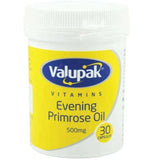

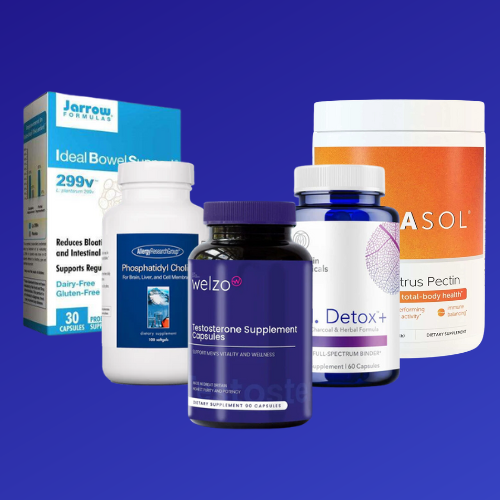
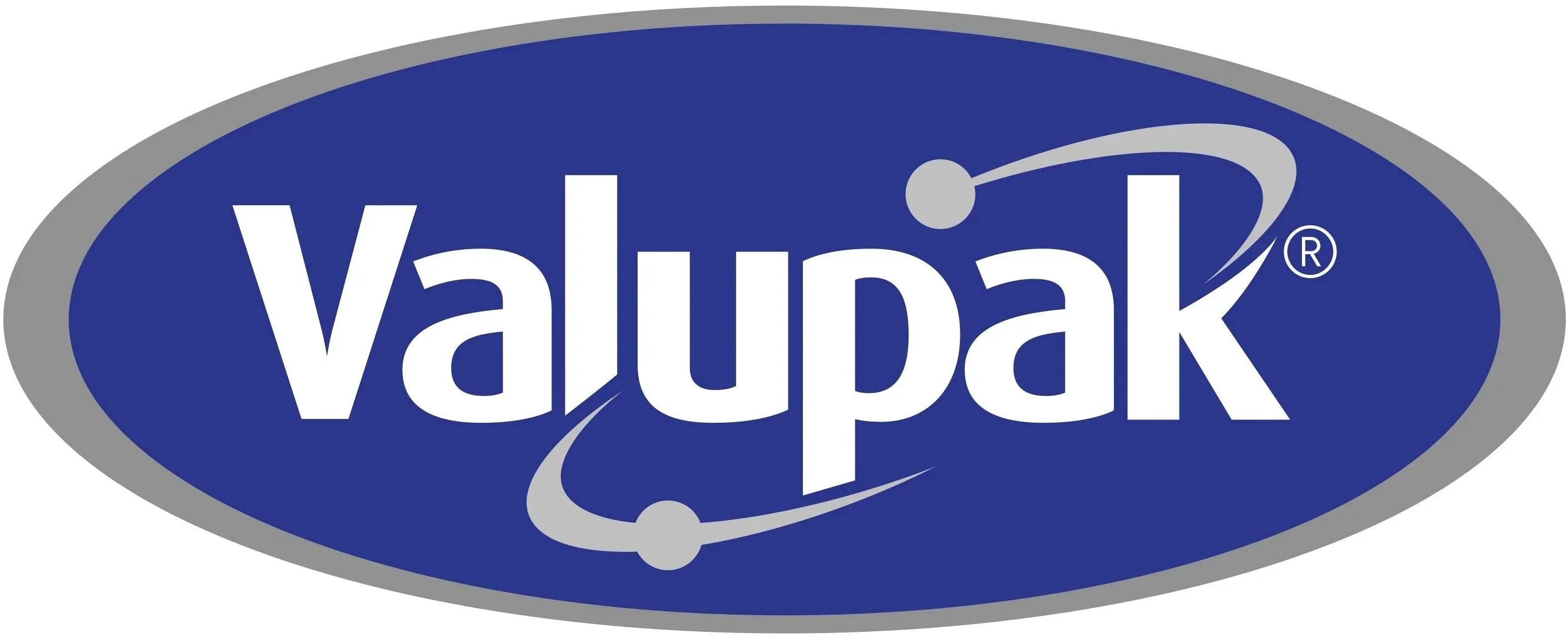

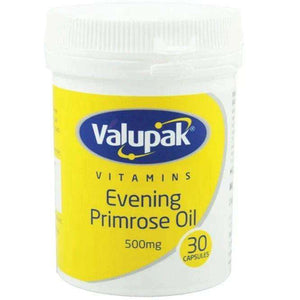


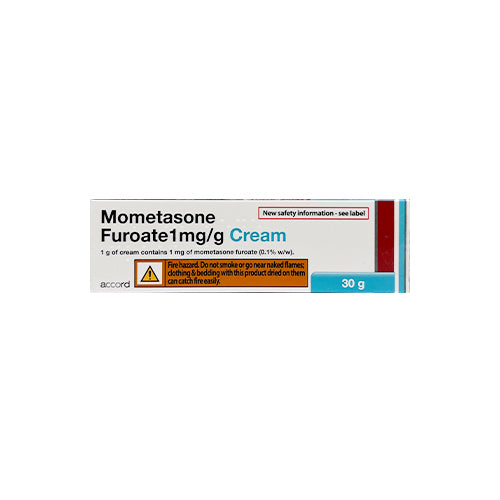
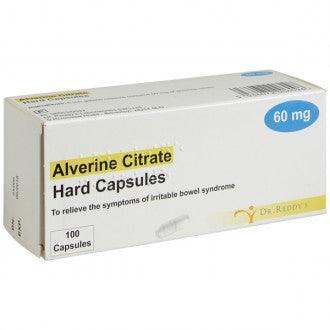
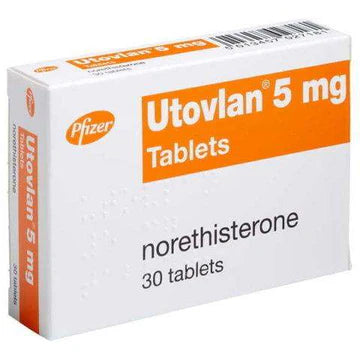
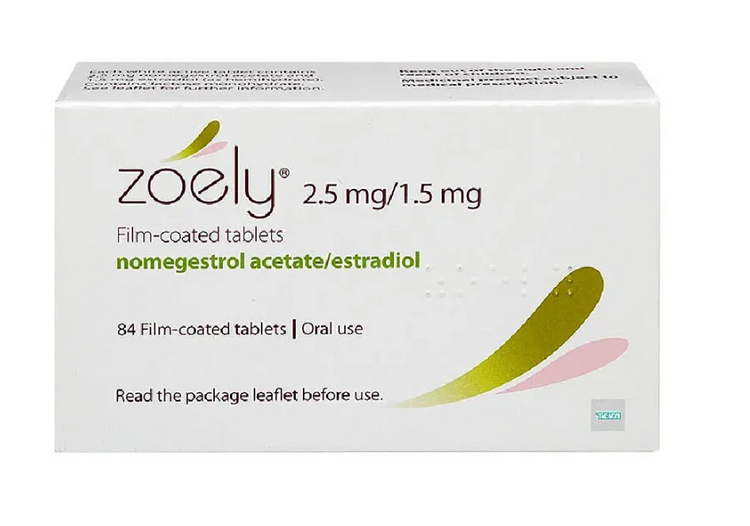
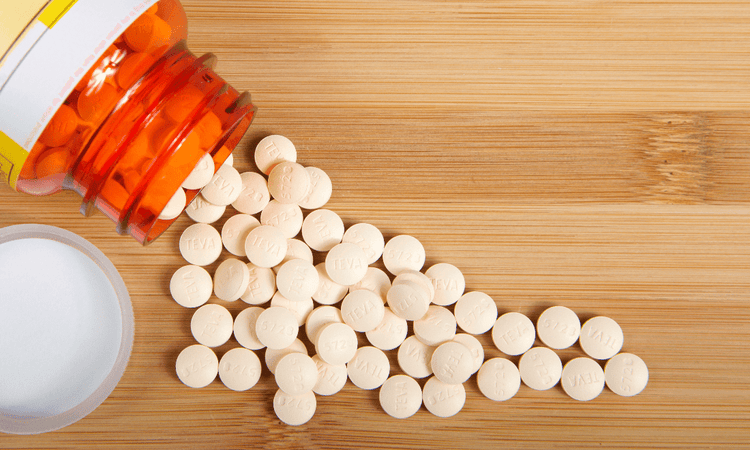
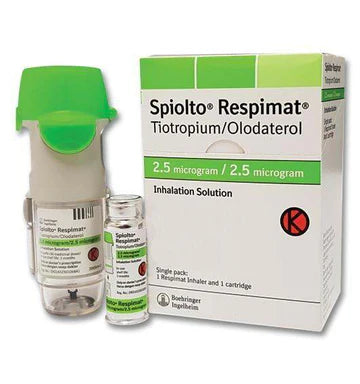
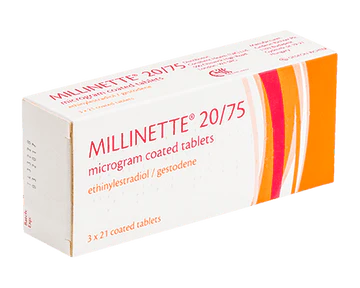
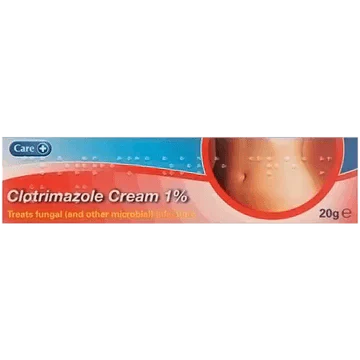
 Rated Excellent by 14,617+ Reviews
Rated Excellent by 14,617+ Reviews